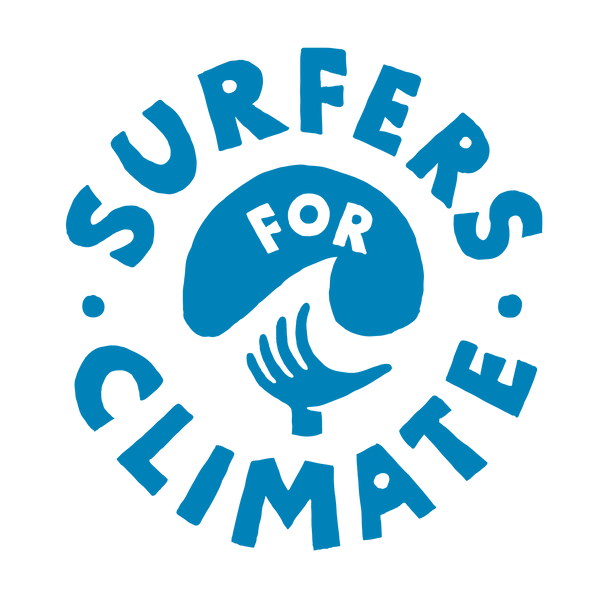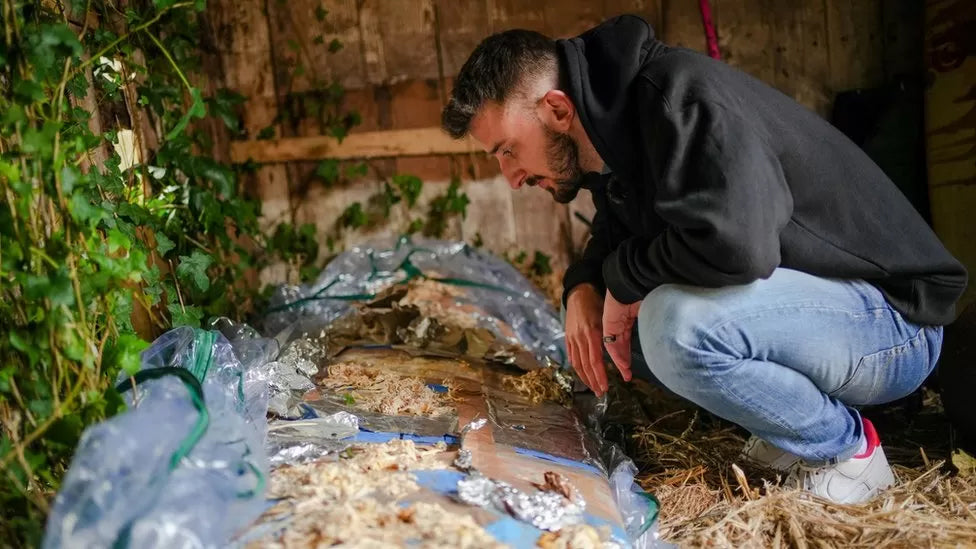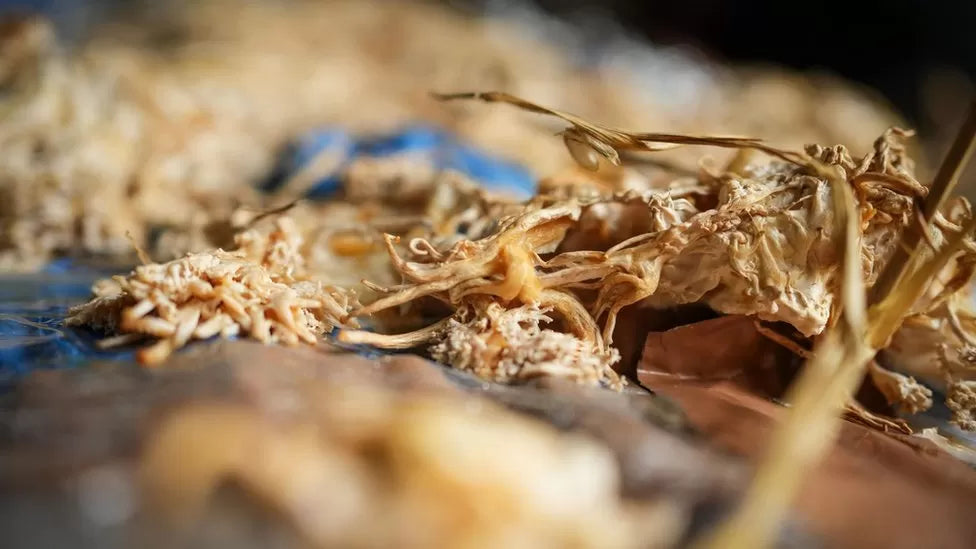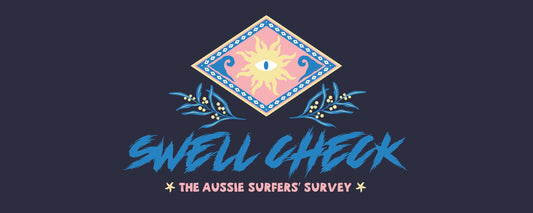An intriguing revolution is quietly unfolding within the realm of surf craft, firmly rooted in principles of sustainability and innovation. Put aside any weird doubts you may have about mushrooms, or apocalyptic concerns stirred by The Last Of Us. Welcome to the realm of mycelium surfboards and bodyboards, where visionary manufacturing meets eco-consciousness. We explore the journey of mycelium surf vessels, reflecting on the past decade's pioneering efforts and looking into reasons behind its delayed roll-out, despite its initial promise.
From the adoption of lighter materials to the development of more hydrodynamic designs, surfboards have undergone a remarkable transformation in recent years. However, the emergence of mycelium surf craft represents a groundbreaking departure from traditional materials and manufacturing practices, embracing the subterranean fungal network found within mushrooms as its central component. With its rapid growth, durability, and biodegradable properties, mycelium has emerged as an exciting prospect for surfboard and bodyboard construction.
The mainstream surfboard industry has faced criticism for its environmental footprint, with traditional boards heavily reliant on resource-intensive materials. Mycelium boards, on the other hand, offer an eco-conscious alternative. Their growth process is remarkably efficient, consuming minimal energy and producing virtually no waste. Companies like Netherlands-based GROWN Bio are at the forefront of mycelium production, utilising a blend of agricultural waste in a controlled environment to facilitate mycelium growth and binding within a mere five days. The subsequent phase involves halting mycelium growth by placing the products in dry chambers for two days. Notably, mycelium decomposes within weeks in domestic compost conditions, a vast contrast to materials like Styrofoam, which take centuries to degrade. Clearly, the case for accelerating the use of mycelium as a low-impact alternative to petroleum-based materials is compelling.
Sue Van Hook, the founder of MycoBuoys and an industry veteran with a decade of experience working alongside eco-tech giants Ecovative, is at the forefront of mycelium-based innovations. She's developed alternatives to widely-used Styrofoam buoys (marine flotation devices) made using hemp and fungal mycelium. Sue provides valuable insights into the material, explaining, “The mycelium weaves a web while digesting dead plant material in the substrate. It leaves lots of void space as it breaks down plant tissues. But there is also a secret ingredient - a palisade layer of hydrophobic proteins that coats the surface of the fungal hyphae making up the mycelium. Mushrooms are shaped like umbrellas for a good reason - the waterproof coating on the surface sheds the rain.”
In discussing recent mycelium-based surfboard and bodyboard projects, Sue highlights a persistent challenge, “Coating the boards [to waterproof them] has always been the issue. While the natural protein coating sheds water, mushrooms only need it to last an average of five days. The solution to the [surf/body]board cores exists. Many companies and researchers are working to create waterproof coatings from plant-based materials - algae, soy, waxes - that last. I myself am waiting for the first jar of bacterial grown paper wasp saliva from Stanford researchers.”
“At MycoBuoys we are testing a new 100% soy-based coating so that the entire product may return entirely to the soil at the end of the product's life. We aim to be truly circular, keeping most of the carbon in the ground.”
The production process of mycelium surf craft is as fascinating as the material itself. It commences with the cultivation of mycelium from spores, which then grows through a substrate, forming a dense, fibrous material. Although this process may appear intricate, it signifies a monumental stride towards sustainability within the surfing industry.
The Magical Mushroom Company, an innovative packaging firm dedicated to phasing out polystyrene, collaborated with Predn Surf Co in Cornwall to initiate a pioneering crowdfunding journey earlier this year. This initiative sought to bring an eco-friendly bodyboard to life, crafted from mycelium and hemp waste. Remarkably, these bodyboards are biodegradable within 50 days and marine-compostable within 180 days.
Initial feedback from their project highlights the foremost challenge thus far (echoed by Sue Van Hook), creating a solution that can withstand the demanding forces of the waves and ensure the longevity of the boards in a subaquatic environment. At present, the company is dedicated to resolving the coating dilemma while striving to achieve a competitive price point that accommodates fair margins for wholesalers and retailers. Magical Mushroom are already well underway to tame the polystyrene packaging market by successfully mass-producing a range of mycelium-based products.
In a notable development earlier this year, 23-year-old designer Steve Davies garnered attention with his endeavour to cultivate a mycelium-based surfboard within a moulded skeletal structure using straw as the additional feedstock of choice. This innovative idea was hatched when he produced a prototype for his final-year project at Cardiff Metropolitan University in the summer of 2022. Steve's experiments have led him to explore solutions involving beeswax and linseed oil to address the waterproofing conundrum.
For those with a penchant for smaller boards, Enjoy Handplanes presents a colourful range of mycelium-based handplanes designed for bodysurfing. In collaboration with Patagonia, these miniature models utilise mycelium from Ecovative and are coated with a bio-resin from Entropy Resins. They even come equipped with an upcycled neoprene strap.
In California, the charismatic duo behind ENV Surfboards created a compelling video in 2019 to showcase their mycelium surfboard project, an initiative that even found its way into a surfing museum. Further information about ENV's project is scarce, indicating that it may not have fully realised its potential or, we hope, is being fine-tuned behind the scenes as we write this.
Another crowdfunding campaign unfolded in Spain and successfully met its funding goal in November 2022. This project, promising a 9-12 month laboratory-based project timeline, is poised to deliver comprehensive mechanical and performance data. The latest update from their crowdfunding page in May of this year revealed news of a successful test of the first prototype. We're intrigued to see where this goes.
Mycelium's influence extends well beyond the realm of surfing. It has found applications in a myriad of products, from living coffins to Adidas shoeboxes, and even tattoo ink trays. Its potential as a building material is also under exploration, with projects such as the Fraunhofer Institute's mycelium stage and the MycoTemple both pushing the boundaries of what is achievable. Perhaps the closest analogy to a surfboard is the creation of a mycelium canoe by U.S.-based student Katy Ayers.
Inspired by packaging industry templates, the mycelium revolution in surfboard and bodyboard production is a testament to human ingenuity and the power of nature. It calls for a rethink of traditional materials and a shift towards a greener, more sustainable future. Challenges remain, including waterproofing and competition from the petroleum-based surf equipment industry, but the promise of surfing having an organically grown, ocean-loving future justifies the effort.
Author: Tom Wilson, Wavechanger
Main image: Steve Davies / BBC





